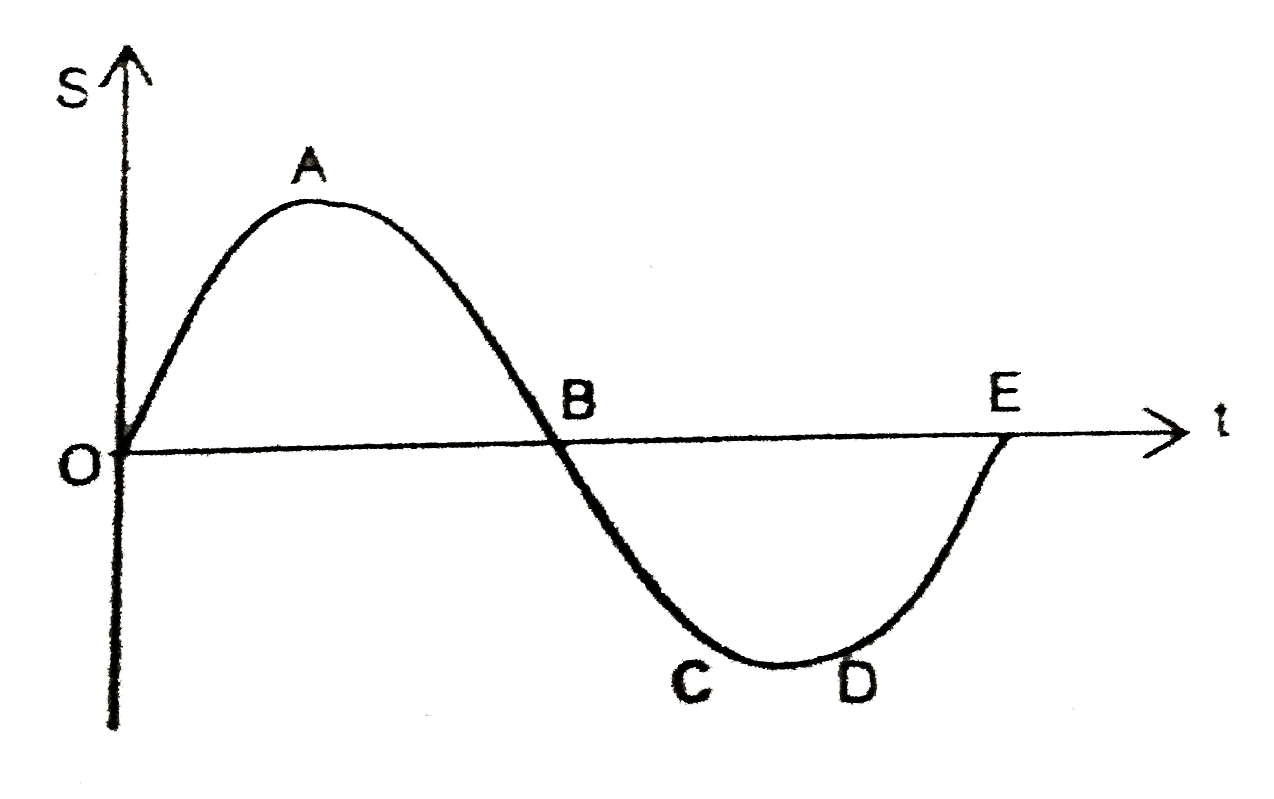A particle has a rectilinear motion and the figure gives its displacement as a function of time. Which of the following statement are true with respect to the motion.

A
in the motion between O and A the velocity is positive and acceleration is negative
B
between A and B the velocity and acceleration are positive
C
between B and C the velocity is negative and acceleration is positive
D
between C and D the acceleration is positive
Video Solution
Text Solution
The correct Answer is:A, C
v = 10
a=−5
2as=v2−u2
−2×5×3=0−100
s = 10m
v=0 at t=ua
t=105=2s
Distance travelled in first 3 seconds = distance connect in first 2 seconds + distance covered in first 2 second + distance covered in 3rd second.
=(10×20−12×5×22)+(1.52×12)
=20−10+52=12.5m
|
Topper's Solved these Questions
Similar Questions
Knowledge Check

A particle has a rectilinear motion and the figure gives its displacement as a function of time. Which of the following statements is incorrect with respect to the motion?Ain motion between 0 to A, the velocity is positive and acceleration is negativeBbetween A and B, the velocity and acceleration are positive.CBetween B and C, the velocity is negative and acceleration is positiveDbetween D and E, the acceleration is positive.Which of the following statements are true wave motion?
AMechanical transverse waves can propoagate through all mediumsBLongitudinal waves can propagate through solids onlyCMechanical transverse waves can propagate through solids onlyDLongitudinal waves can propagate through cacuumWhich of the following statements are true for wave motion ?
AMechanical transverse waves can propagate through all mediumsBLongitudinal waves can propagate through solids only.CMechanical transverse waves can propagate through solids only.DLongitudinal waves can propagate through vacuum.
Which of the following is true of Brownian motion ?
View SolutionWhich of the following statement is not true regarding the Newton's third law of motion?
View SolutionA particle moves with uniform velocity. Which of the following statements about the motion of the particle is true?
View SolutionWhich of the following functions of time represent periodic motion ?
View SolutionWhich one of the following statements is NOT true about the motion of a projectile ?
View Solution


